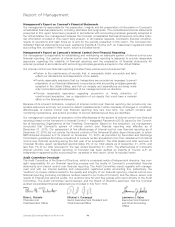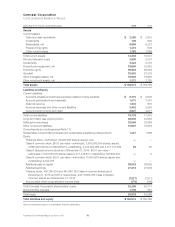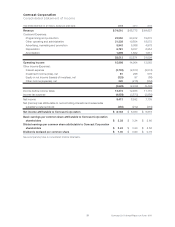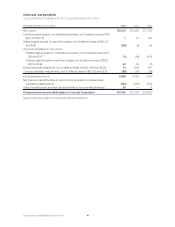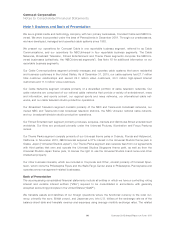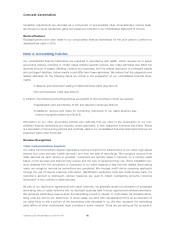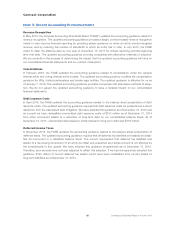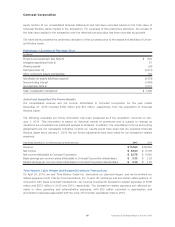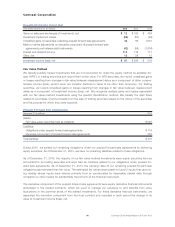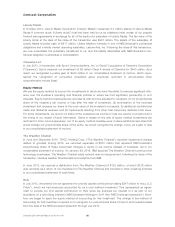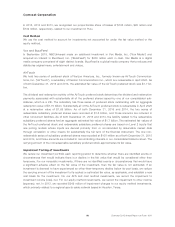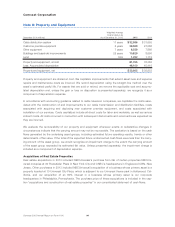Comcast 2015 Annual Report Download - page 87
Download and view the complete annual report
Please find page 87 of the 2015 Comcast annual report below. You can navigate through the pages in the report by either clicking on the pages listed below, or by using the keyword search tool below to find specific information within the annual report.Comcast Corporation
Theme Parks Segment
Our Theme Parks segment generates revenue primarily from ticket sales and guest spending at our Universal
theme parks in Orlando, Florida; Hollywood, California; and, as of November 2015, Osaka, Japan, as well as
from licensing and other fees. We recognize revenue from advance theme park ticket sales when the tickets
are used. For annual passes, we recognize revenue on a straight-line basis over the period following the acti-
vation date.
Cable Communications Programming Expenses
Cable Communications programming expenses are the fees we pay to license the programming we distribute
to our video customers. Programming is generally acquired under multiyear distribution agreements, with
rates typically based on the number of customers that receive the programming, channel positioning and the
extent of distribution. From time to time, these contracts expire and programming continues to be provided
under interim arrangements while the parties negotiate new contract terms, sometimes with effective dates
that affect prior periods. While payments are typically made under the prior contract’s terms, the amount of
programming expenses recorded during these interim arrangements is based on our estimates of the ultimate
contract terms expected to be negotiated. Differences between actual amounts determined upon resolution
of negotiations and amounts recorded during these interim arrangements are recorded in the period of reso-
lution.
When our Cable Communications segment receives incentives from cable networks for the licensing of their
programming, we defer a portion of these incentives, which are included in other current and noncurrent
liabilities, and recognize them over the term of the contract as a reduction to programming expenses.
Advertising Expenses
Advertising costs are expensed as incurred.
Cash Equivalents
The carrying amounts of our cash equivalents approximate their fair values. Our cash equivalents consist
primarily of money market funds and U.S. government obligations, as well as commercial paper and certifi-
cates of deposit with maturities of three months or less when purchased.
Derivative Financial Instruments
We use derivative financial instruments to manage our exposure to the risks associated with fluctuations in
interest rates, foreign exchange rates and equity prices. Our objective is to manage the financial and opera-
tional exposure arising from these risks by offsetting gains and losses on the underlying exposures with gains
and losses on the derivatives used to economically hedge them.
Our derivative financial instruments are recorded in our consolidated balance sheet at fair value. The impact
of our derivative financial instruments on our consolidated financial statements was not material for all periods
presented.
Asset Retirement Obligations
Certain of our cable franchise agreements and lease agreements contain provisions requiring us to restore
facilities or remove property in the event that the franchise or lease agreement is not renewed. We expect to
continually renew our cable franchise agreements and therefore cannot reasonably estimate any liabilities
associated with such agreements. A remote possibility exists that franchise agreements could be terminated
unexpectedly, which could result in us incurring significant expense in complying with restoration or removal
provisions. We do not have any significant liabilities related to asset retirements recorded in our consolidated
financial statements.
Comcast 2015 Annual Report on Form 10-K 84


